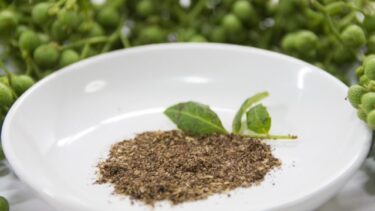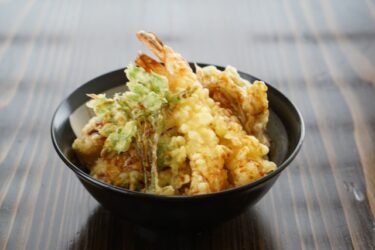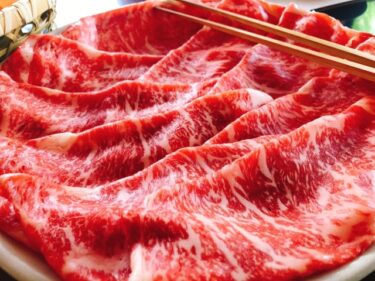Eels are fatty fish. Kabayaki is made by removing the bones of eel and baking it with sweet and spicy Tare sauce.
The dish with this on top of rice is Unadon and Unaju, which are similar dishes, but Unaju has more eel and is more expensive.
Eels are a high-class ingredient, so we don’t usually eat them. Due to its high nutritional value, it is customary to eat in the summer when it is easy to get sick. There are few natural eels. Most of the eels we eat in Japan are farmed.
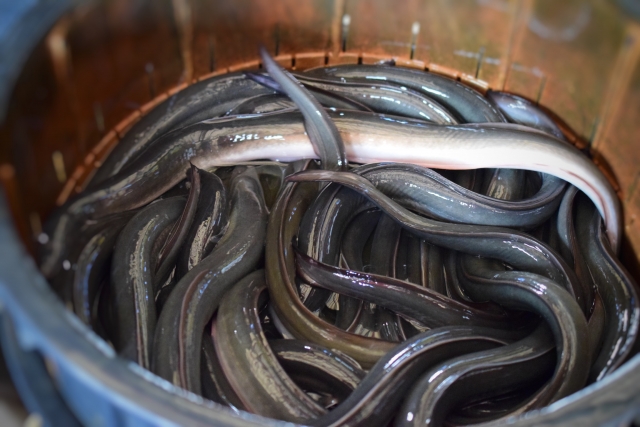
What is Unadon and Unaju and can I eat it?
Materials of Unadon and Unaju
Rice, eel
Tare Soy source, sugar, dashi(seafoods, konbu(kelp)), mirin or sake(alcohol)
| Low-gluten | Low FODMAPs | |||
| Restaurant |
Eel kabayaki is a traditional cooking method
Eel is a fish that is often eaten in Japan, and every Japanese knows it. But I think most people eat only a few times a year. The reason is that the price is high.
Most eels are cooked in kabayaki. It is a method of baking the bone-removed meat while soaking it in a sweet and spicy Tare sauce made from soy sauce, mirin, sugar, etc. The eel made in this way is called kabayaki. Eel is a fatty fish, so if you bake it while soaking it in Tare, the oil will be reduced moderately and you can eat it deliciously.
The recipe for Tare differs depending on the restaurant. In addition, eel fat and meat juice are mixed in and the flavor gradually improves, so many stores use Tare while adding more, and some have been using Tare for nearly 100 years.

Unadon is placed on rice with kabayaki in a bowl, and Unaju is placed on rice in a jubako. The dishes are the same except for the tableware, but the price of Unaju is higher because the amount of dish is larger.
When eating, Unadon and Unajyu also has a habit of sprinkling powdered Japanese pepper, “Sansyo”, which is a plant seed,. Sansho has a fragrant scent.
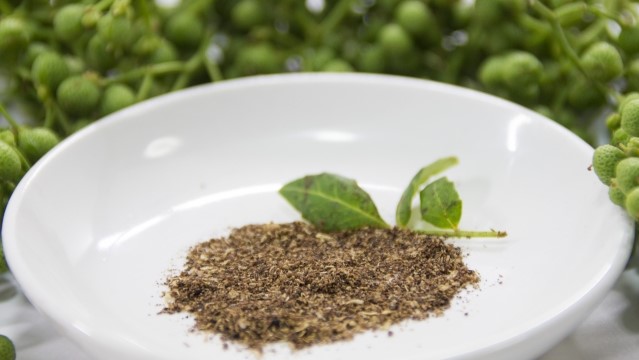
We have been eating eels in Japan for 10,000 years. Until about 300 years ago, it was eaten by the common people, but as a result of the decrease in natural eels, it is now a high-class ingredient. According to national statistics for 2020, domestic aquaculture is 33%, imports are 67%, and natural boke’s is only 0.1%.
Aquaculture using fry caught in the sea has been carried out for 50 years, but gradually it has become impossible to eat fry. Fully cultivated a few years ago, but due to its high cost, it has not been commercially available.
Sansho is a plant of the Rutaceae family, and three main parts, young leaves, immature fruits, and pericarp, are used in[…]
Try to eat Unadon and Unaju!
How much ?
$20~40 at an eel specialty restaurant
The larger the quantity, the higher the price
Where can I eat Unadon and Unaju?
Eel specialty restaurants.
Precautions when eating Unadon and Unaju
For people with celiac disease and gluten-free
Wheat may be used as a raw material for the soy sauce used in Tare sauce.
However it is estimated that the amount of gluten contained in the dish is very small because the protein contained in soy sauce is decomposed in the brewing process and not remains, and the amount of Tare sauce used is not large.
For Muslims
Soy sauce, the raw material for Tare sauce, contains 2% alcohol. However, since the eels are baked with Tare sauce, the alcohol evaporates and does not remain in the dish.
Japanese writer’s comment for another meal of eel
Let me introduce a slightly different way to eat eel. Nagoya is a town with a unique food culture, and Nagoya’s local cuisine is called “Nagoyameshi”. One of Nagoyameshi is “Hitsumabushi,” a dish that uses eel. Hitsumabushi is made by cutting and placing kabayaki eel on the rice inside an ohitsu. Ohitsu is a container that holds rice before it is put in a bowl, and we do not eat it as it is. The official way to eat Hitsumabushi is as follows.
First, divide the rice in the ohitsu into four equal parts with a rice scoop.
Next, pour 1/4 of the divided rice into a bowl and eat it as it is. It is the same as Unadon and Unaju.
Put the next 1/4 in a bowl, sprinkle with spices such as green onions, wasabi, and seaweed as you like, and mix and eat. You can enjoy a different taste from Unadon.
Then put the next 1/4 in a bowl, add dashi soup or green tea, and eat it as ochazuke. It will have a different taste.
Eat the last quarter with the most favorite of the above three.
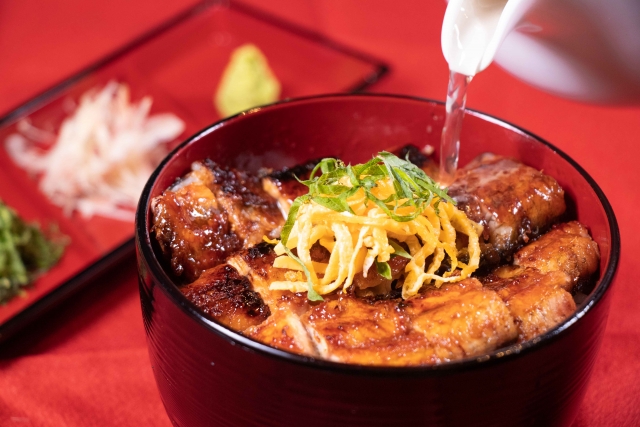
I’ve only eaten it once, but it’s very interesting because we can enjoy eels in three different flavors. Prices are high at $ 37-48, but it’s worth a try. There are several restaurants in Nagoya where you can eat Hitsumabushi, but “Atsuta Houraiken” is a popular restaurant.


